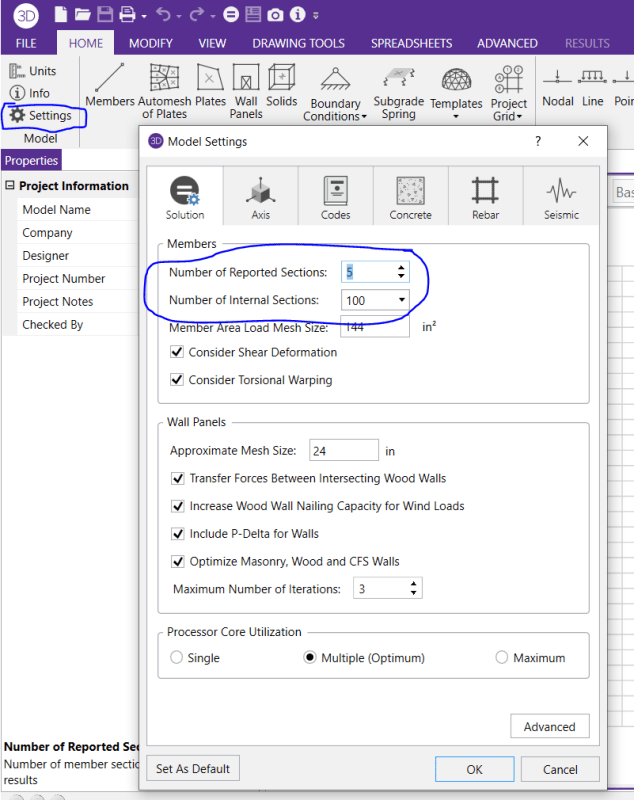I'm modeling a continuous beam that has 5 spans and the end spans are cantilevers. When all of the spans are equal, the moment at the first supports from the ends from Risa are correct. That is they match the moments calculated using structural analysis; w(l^2)/2.
When the end spans don't equal the interior spans, the negative moment reported by Risa isn't correct. Can anyone tell me why?
Thanks,
Scott
When the end spans don't equal the interior spans, the negative moment reported by Risa isn't correct. Can anyone tell me why?
Thanks,
Scott


![[wink] [wink] [wink]](/data/assets/smilies/wink.gif) .... it was something that always bothered us. It just never got a high priority because the large amount of work / re-work that it would have caused without really driving any new sales. Without me and Roger, I suspect there isn't a champion in the office to address this.
.... it was something that always bothered us. It just never got a high priority because the large amount of work / re-work that it would have caused without really driving any new sales. Without me and Roger, I suspect there isn't a champion in the office to address this.